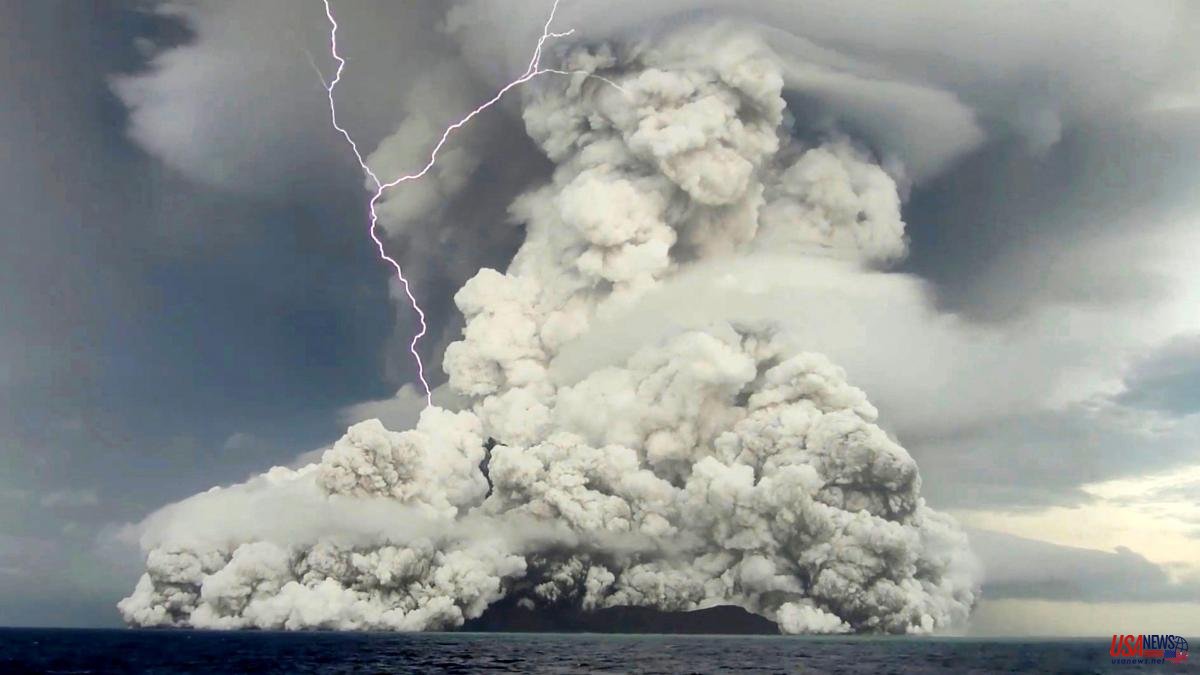The Hunga Tonga-Hunga Ha'apai submarine volcano (in the Pacific island state of Tonga) erupted last January in one of the most explosive volcanic episodes of modern times, triggering atmospheric gravity waves that reached edge of outer space and circled the planet at least six times.
This is explained in a study led by researchers from the University of Bath (United Kingdom) and published in the journal 'Nature'. The work combines extensive satellite data with ground-level observations to show that this eruption was unique in observed science in both its magnitude and speed, and in the range of atmospheric waves it created.
Following a series of smaller events beginning in December 2021, Hunga Tonga erupted on January 15 this year, producing a vertical plume that extended more than 50 kilometers above the earth's surface.
The heat released by the hot water and ash in the plume became the largest source of gravitational waves on Earth for the next 12 hours. The eruption also produced gravity waves similar to satellite observations that spread across the Pacific Rim.
The eruption also caused ripples in the atmosphere that reverberated around the planet at least six times, reached about 100 kilometers into the ionosphere, and reached near their maximum theoretical speeds, the fastest ever seen inside our atmosphere, that is, at 320 meters per second.
The fact that a single event dominated such a large region is described by the paper's authors as unique in the observational record, and will help scientists improve future atmospheric weather and climate models.
“This was a genuinely huge explosion and truly unique in terms of what science has observed to date. We had never seen atmospheric waves going around the entire world at this speed before, they were traveling very close to the theoretical limit, ”says Corwin Wright, from the Center for Space, Atmospheric and Oceanic Sciences at the University of Bath.
Wright stresses that "the eruption was an incredible natural experiment." “The data that we have been able to collect will improve our understanding of our atmosphere and help us improve our weather and climate models,” she adds.
Scott Osprey of the National Center for Atmospheric Sciences, based in the Department of Physics at the University of Oxford, UK, expects to see eruptions from Hunga Tonga. "Our study shows very well how the amazing global wave display is driven by the huge amounts of seawater vaporized during the eruption. However, my hunch is that there is more to come from this eruption. As the exceptional amount of water vapor spreads through the stratosphere, eyes will turn to the Antarctic ozone hole and how severe it will be in spring”, he points out













